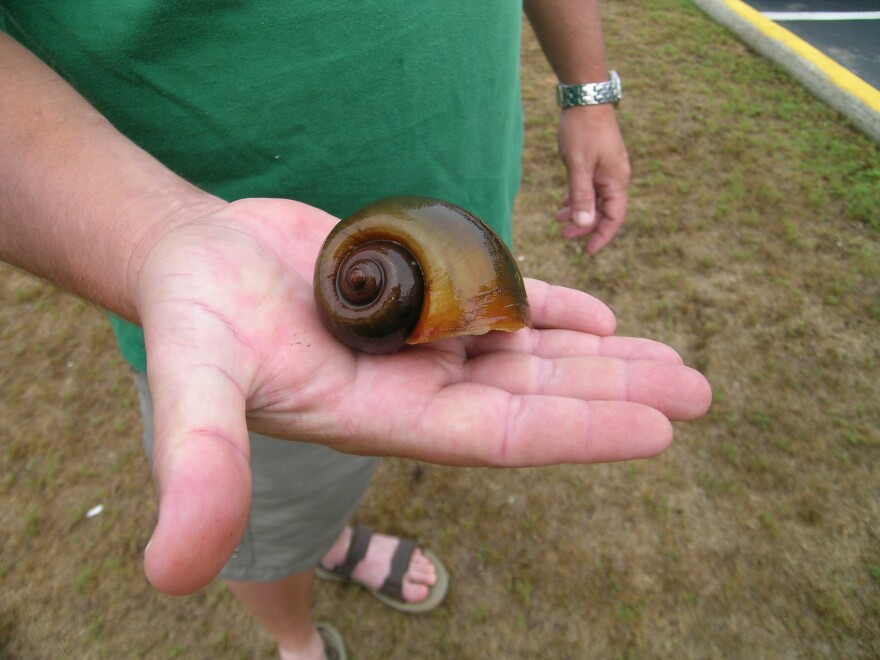Another invasive aquatic species has been found in North Carolina.
Officials with the N.C. Wildlife Resources Commission said Apple Snails have been identified along the Lumber River in Lumberton.
A biologist found adult snails and eggs near the I-95 bridge crossing of the Lumber River and in Fivemile Branch, a tributary of the river.
Apple Snails can damage plants used by many native aquatic species and they have been seen feeding on amphibian eggs. Female snails lay eggs as often as once a week, which allows populations to grow and spread rapidly.
There are human health risks as well; the snails can carry rat lungworm, which can cause a potentially fatal disease in people if the snails are eaten raw or undercooked. The snail’s egg masses also contain a toxin which can cause skin and eye rashes.

NCWRC officials are asking anyone that spots the snails, which, at two to four inches in size are much bigger that native aquatic snails – or their distinctive pink egg clusters to report it online using the Aquatic Nuisance Species Reporting Tool, with a photo and the location.
After documenting the location, officials say egg masses can be destroyed by crushing them and scraping them into the water with something like a stick or a boat paddle, but to be sure to avoiding touching them with bare skin. Adult snails can be destroyed by crushing or freezing them.
A link to the reporting tool is available HERE.



